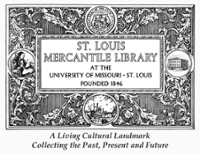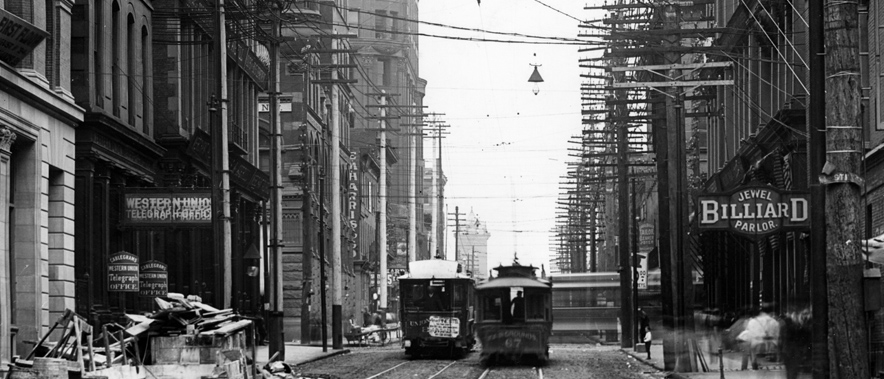DATE: 10 March, 1807
CREATOR: Rogers, John.
SCOPE: Letter to General Samuel Smith concerning passage to India.
EXTENT: 1 letter, autograph letter signed
HISTORY: In this letter of March, 1807, Commodore John Rodgers, Lt. Theodore Hunt’s superior in the US Navy, is soliciting the powerful Maryland politician, General Smith, to help find a command for Hunt as captain of a suitable merchant ship about to make a commercial voyage to the East Indies. Hunt is on long term furlough from the US Navy and is in need of employment. Rodgers is writing this letter from Havre de Grace, Maryland, his home and birthplace (and named by Lafayette).
John Rodgers, (1772-1838) was a senior naval officer in the US Navy who served under six Presidents for nearly four decades during its formative years in the 1790s through the late 1830s, committing the greater bulk of his adult life to his country. His service took him through many operations in the Quasi-War with France, The Barbary Wars in North Africa and the War of 1812 with Britain. In 1793 he was highly recommended for command of the Jane, a merchant ship employed in the European trade and owned by the prominent Baltimore merchants Samuel and John Smith (the former being person to this letter is addressed). Later as a senior officer in the young American navy he played a major role in the development of the standards, customs and traditions that emerged during this time. After the Embargo Act was passed at the close of 1807, Rodgers commanded operations along the Atlantic coast enforcing its provisions. During the War of 1812 Rodgers fired the first shot of the war aboard his flagship, the USS President, and played a leading role in the recapture of Washington after the capitol was burned by the British, while also enduring his own hometown and house burned and his family displaced. During the multifaceted attacks on Washington D.C., Alexandria VA and Baltimore MD, in August and September 1814, Rodgers, with a force of officers, Marines and sailors, was able to stabilize the military situation around Washington after the burning and working with General Smith supported the defense of Baltimore. Later in his career he headed the Navy Board of Commissioners and served briefly as Secretary of the Navy.
General Samuel Smith (1752-1839) was a US Congressman and Senator a from Maryland, a mayor of Baltimore, and a general in the Maryland militia. He was the brother of cabinet secretary Robert Smith. Smith entered into the Senate election in 1803, as a Democratic-Republican after serving in the House from 1793. He served the first time until 1815. He was as a US congressman again from 1818 to 1822 and then as US senator from 1822 to 1833. Smith served as a major general of Maryland militia during the War of 1812, and commanded the defenses of the city during the Battles of Baltimore and Fort McHenry (Sept. 12-14,1814). The American victory there can largely be attributed to Smith's preparation for the British invasion.
Theodore Hunt and the US Navy - Captain Theodore Hunt, US Navy, was born near Trenton New Jersey and entered the US Navy as a midshipman in 1798. By 1803 he was the third ranking Lieutenant on the frigate USS Philadelphia, under the command of Captain William Bainbridge, serving during the First Barbary War (1801-1805) in the Mediterranean. On October 31, 1803 the Philadelphia ran aground on an uncharted rock in Tripoli harbor. Ultimately Bainbridge was forced to surrender. He and his crew of 307 (including Lt. Hunt) were held prisoners by Tripoli for 19 months. By the Treaty of Peace with the Pasha of Tripoli, the officers and crew were released for ransom on June 3, 1805. After enquiry into the loss of the Philadelphia, Bainbridge was furloughed for service in the merchant service. It can be assumed that this was also the case for Lt. Hunt and is the reason this letter was written on his behalf by Commodore Rodgers. Hunt was later commander of the USS brig Hornet from October 1809 to May 1810. He wrote to Oliver Hazard Perry in 1810 from the Hornet to inform him he was to be a member of a court-martial. He resigned his commission in somewhat murky conditions in May 1811, thirteen months before the start of the War of 1812. This was after a thirteen year career with the US Navy. He then performed a voyage to China for John Jacob Aster. He finally left the sea and moved to St Louis MO.
Theodore Hunt's move to St. Louis may have been prompted by his cousin Wilson Price Hunt (1783-1842), partner with John Jacob Aster, in the Pacific Fur Company and leader of an expedition from St. Louis to the northwest and Astoria in 1810-12. After arrival in St. Louis Theodore Hunt met Ann Lucas (1796-1869) daughter of Jean B. C. Lucas (1758-1842) one of St. Louis’ most successful land speculators. Hunt and 18-year-old Ann were married on June 23, 1814, witnessed by Gov. William Clark. They lived for a time in a house on the SW corner of 2nd and Spruce St. which had been purchased from Manuel Lisa. Hunt became a not-too-successful merchant in partnership with Lisa in the Missouri Fur Company until 1817. He made a trip up the Missouri River with Lisa during this period. In 1817 after Ann’s brother Charles was killed in a dual with Thomas Hart Benton, the couple bought and lived on property in South St. Louis County on Gravois Road that was later to become Fredrick Dent’s home White Haven. They sold the property to Dent in 1820. The Hunts then moved to
Lucas property in what was later to be the City of Normandy (named by her father after his home province in France). They built a home on a plot of 120 acres. In 1824 Hunt was appointed Federal Recorder of Land Titles by Monroe. His detailed minutes as reorder were to become of great historical value. This job was lost with the coming of Jackson’s administration in 1829. Shortly after this he suffered a stroke and gradually declined until his death Jan. 21, 1832. He left behind his wife Ann and three surviving children.
Ann married her husband’s cousin Wilson Price Hunt in 1836, who in turn died in 1842. In 1850/51 Ann and her brother James H. Lucas, laid out an upscale residential neighborhood on a section of a farm they had inherited from their father. The main thoroughfare was called Lucas Place. Ann lived at #1706 and James at #1515. Robert Campbell, whose home is still still standing, lived at #1508. The large amount of property originally owned by the Lucas family and Ann Lucas Hunt in what is now Normandy MO must have lead to the naming of Lucas and Hunt Road in North St. Louis County.
ACCESS: Due to rarity and condition, access to this collection is limited please contact the staff Please contact the staff in advance of your visit to coordinate access to these materials for research purposes.
A transcription of the letter is available for download.
When available, this collection is available for on-site use only in the Rare Book and Manuscripts Reading Room. Some of the material in Special Collection M-083 may be photocopied, digitally scanned or photographed, subject to condition. For collections marked limited access, researchers are advised to contact the library at least three business days in advance of their visit to submit a request to view the physical material.
Researchers are advised to call ahead concerning changes in hours due to University intersessions and holidays. The St. Louis Mercantile Library is located on levels one and two of the Thomas Jefferson Library building.
In observance of security procedures, certain services may not be available shortly before the daily closing time.
Preferred Citation: When citing the material from this collection, the preferred citation is: From the Special Collections of the St. Louis Mercantile Library at the University of Missouri – St. Louis.





